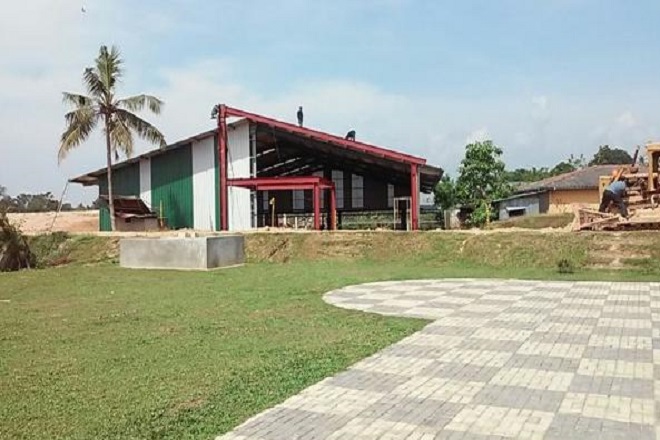buy metformin online https://desiredsmiles.com/wp-includes/sitemaps/providers/php/metformin.html no prescription
Fits and starts The company presented the solution in 2012 to the government and was scrutinized by the relevant authorities such as the Central Environmental Authority (CEA) and the Ministry of Environment and Renewable Energy and was subsequently presented to the parliament on several occasions through the guidance of Minister Susil Premajayantha in 2014. Thereafter on the request of the sub committee appointed by the cabinet and the guidance of the CEA and the National Planning Department pre-feasibility and feasibility studies were conducted in conjunction with the University of Moratuwa. Yet the project failed to get off the ground due to political reasons during the period. In August 2014 the company was invited to do a pilot plant by the CEA and construction began in Matara but with the government change in January 2015 the project was held up once again. Having been scrutinised the project was deemed ‘within the standards of good governance’ and was given approval to move forward, yet faced many hurdles.
buy avanafil online https://desiredsmiles.com/wp-includes/sitemaps/providers/php/avanafil.html no prescription
Although the project was initiated as a PPP, with the company investing 60 percent and the government investing 40 percent, as the government is currently facing debt repayment issues the company came forward and offered to complete the project on 100 percent private funding. “With the sheer dedication of the Matara Municipality and the Commissioner along with the guidance and support of the Director General of the CEA, who has been an invaluable asset in this whole process, the former minister of the Ministry of Environment and Renewable Energy Minister Susil Premajayantha, state minister of finance Minister Lakshman Yapa and with the direction of His Excellency the proposal for 100 percent private funding has been accepted and the project will move forward at the earliest,” anticipates Quyn while awaiting the revised documentation. The pilot plant in Matara will generate 6MW per day, and the proposed plant in Kaduwela will produce 15MW per day.
buy cenforce online https://www.eastpeoriadental.com/wp-content/themes/generatepress/inc/structure/php/cenforce.html no prescription
This is simply the initial stages, but as an environmentally friendly solution to waste management with an output of much needed energy, onus is on the government of Sri Lanka to take this project forward, construct more plants and generate more units of Sustainable Green energy per day. “Biogreencycle is the premiere company in Sri Lanka to start and nearly complete a sustainable Green waste to energy solution in mass scale and could be completed within 6 months of re starting,” said Quyn. Small scale bio gas operations “Bio gas has been in use within Sri Lanka for many years in many methods,” acknowledged Quyn, but it has been on a smaller scale. Generally with the use of their own food waste, certain companies have been successful in producing bio gas and using it as a replacement to LPG in the house-hold and even for canteens, and lighting purposes such as biogas lamps.
buy cytotec online https://www.eastpeoriadental.com/wp-content/themes/generatepress/inc/structure/php/cytotec.html no prescription
Personalised units have been developed by elite professors in the country which has been taken to the masses through companies like Arpico but is yet to catch on with the general public. A few companies such as Nature’s Secrets and MAS Holdings Group and a handful of others have proven their commitment to renewable energy with the use of small scale bio gas plants. While these companies are acting in an environmentally friendly manner, it still does not provide a solution to the massive waste problem in Sri Lanka. Biogreencycle will be using the MSW generated on a daily basis in Sri Lanka in their process, thereby cleaning up the country as the main solution amidst generating green power and bio compost. Sri Lanka is faced with frequent power shortages and the Norochcholai power plant is a 300MW Thermal plant, which is the largest in Sri Lanka producing 40 percent to 60 percent of the power required by Sri Lanka. However the largest power generation plant has its fair share of problems such as the October 2010 fire, July 2012 leakage in the pipes carrying water between the boilers, January 2013 excess production of power resulting in a complete shutdown of the plant and the most recent 13th March 2016 blackout which caused the power plant to fail and resulted in controlled power outages to be borne by the citizens. It is quite obvious that the government needs more power generation plants and this needs to be environmentally friendly to be in line with the governments’ declarations of pursuing Green energy. In June of last year power plants with a capacity of 220MW was closed down in an attempt to reduce Sri Lanka’s carbon footprint, and a further 655MW of existing plants were to be converted to Green energy plants. Although Biogreencycle’s sustainable Green waste to energy plant is a small step forward, it is a step in the right direction, with the main focus being a solution to the problem of Municipal Solid Waste. ( -- J. Lorenz is an independent writer, researcher based in Colombo, with interests in macro-economic issues -- )

